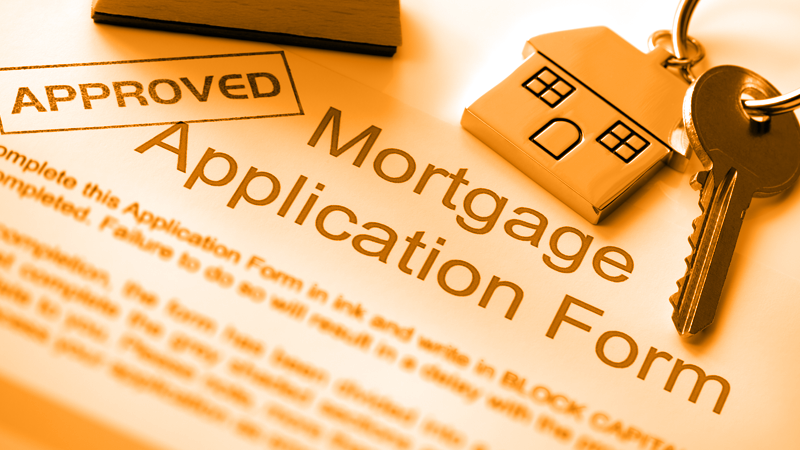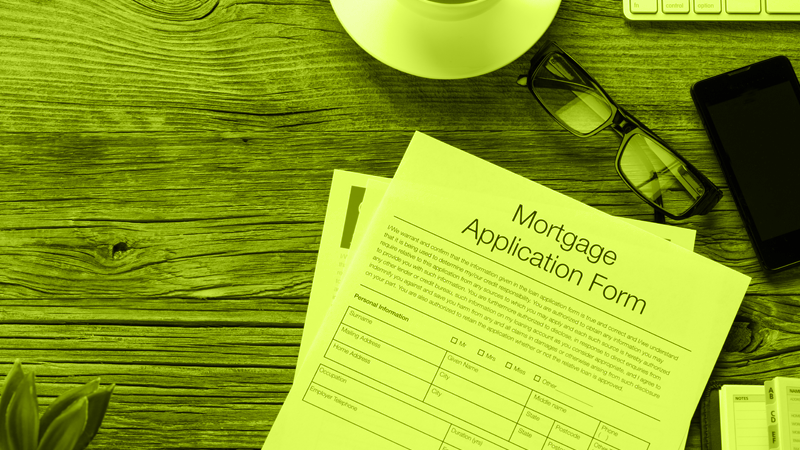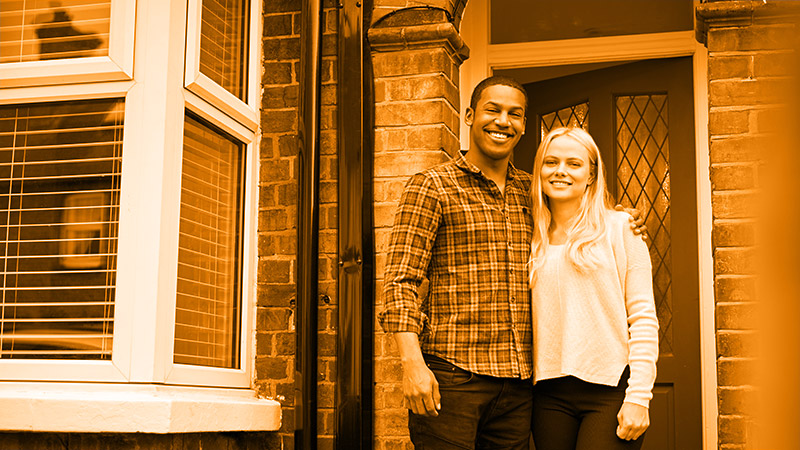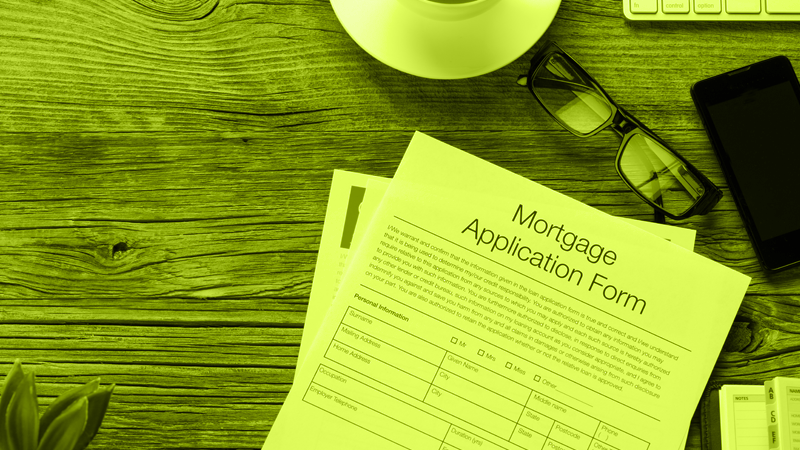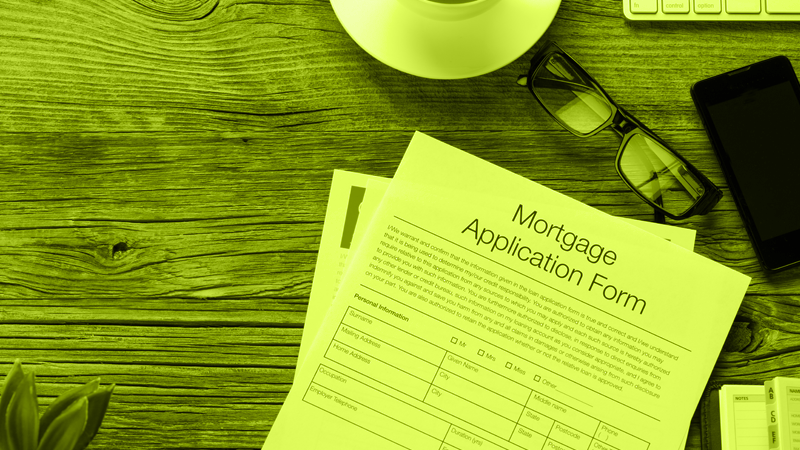Documents Needed for Mortgage Application: Expert UK Guide 2025
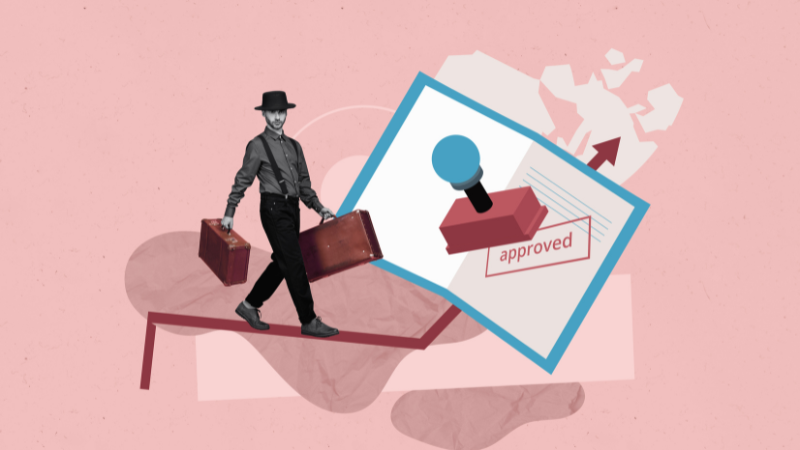

Securing your dream home starts with proper mortgage documentation that UK lenders require to establish trust in your repayment ability.
A mortgage application needs three essential document categories: Proof of ID, Proof of Income, and Proof of Expenses. Your personal circumstances might require additional paperwork. For example, self-employed applicants must submit self-assessed tax return forms (SA302) and tax year overviews. Foreign nationals’ residency status affects their documentation requirements, especially those who have lived in the UK for less than 12 months.
This blog explains the exact documents UK lenders need, proper preparation methods, and solutions for unique situations. Your mortgage application process becomes smoother with organised paperwork, regardless of your status as a first-time buyer or someone moving up the property ladder.
Proof of Identity
Mortgage lenders must verify your identity before they process your application. They need to confirm who you are and where you live. This helps prevent fraud and ensures compliance with strict financial regulations. Here’s what UK mortgage lenders usually ask for to verify your identity.
Passport or driving licence with current address
Your passport or driving licence is the lifeblood of your identity verification. UK lenders accept these documents:
- A current, valid passport from any country
- A current UK photocard driving licence (full or provisional)
- A current biometric residence permit for the UK
- A current EU/EEA national identity card
You can’t use the same document to verify both your name and address, even though both documents might work for either purpose. If your driving licence proves your identity, you’ll need different documents to confirm where you live.
Your identity documents must be valid and not expired. Check the expiry dates before you submit your application. An expired document will slow down your mortgage application. Many lenders prefer to see your current address on your driving licence if that’s your chosen form of ID.
Recent utility bill or council tax statement
After confirming your identity, lenders need official documents to verify your address. These utility bills are commonly accepted:
- Gas or electricity bills from the last three months
- Water bills (usually accepted from the last 12 months)
- Council tax bill for the current tax year
- Landline telephone bill (not mobile phone bills) from the last three months
Paper copies work better than online bill printouts with most lenders. These documents should show your current address and match what’s on your application.
You might find it hard to provide these documents if you’ve moved recently. Let your mortgage broker or lender know early if this applies to you. They can suggest other options. Some lenders might accept a letter from someone who knows you professionally, like a solicitor, accountant, or doctor.
Bank or credit card statement dated within 3 months
Your financial statements offer another reliable way to verify your address. You can use:
- Bank statements from a UK-based bank or building society (last three months)
- Credit card statements from main UK providers (last three months)
- Mortgage statements (usually accepted from the last 12 months)
Most lenders want original paper copies mailed to you, not printouts from online banking. Each lender has their own rules – some accept online statements if they show your name, address, and the bank’s logo clearly.
You’ll need to ask your bank for paper copies if you’ve gone paperless. Make sure to give yourself enough time to receive these before submitting your application.
Lenders look for matching details across all your documents. Questions might come up if your name or address appears differently on various documents. To cite an instance, see how using middle names on some documents but not others might need explaining.
Lenders know not everyone has the same paperwork available. Talk to your mortgage advisor or lender if you’re worried about meeting these requirements. They often have alternatives that might work better for your situation.
Note that lender requirements can vary slightly, but these core identity documents are the foundations of a UK mortgage application. Getting these documents ready ahead of time helps your application move forward smoothly.
Proof of Income for Employed Applicants
Lenders need to verify your income to assess if you can afford the mortgage repayments after confirming your identity. The process involves submitting several key financial documents that show your earning stability and capacity for employed applicants. Here’s what you’ll need to provide:
Latest 3 months of payslips
Your payslips are the lifeblood of income verification for employed mortgage applicants. Lenders usually ask for the previous three months’ payslips as standard documentation to confirm your regular income. The exact requirement changes based on your salary frequency:
- Monthly paid employees need their last three monthly payslips
- Weekly paid workers might need four to eight of their most recent weekly payslips
- Employees paid fortnightly usually need about six recent payslips
Your payslip timing matters substantially. The most recent payslip should be dated within two months of your application date. Weekly-paid applicants need payslips within five weeks of application.
Your payslips must contain specific information to be valid. Each one should clearly show:
- Your full name that matches your mortgage application exactly
- Your employer’s name (additional documentation needed if missing)
- Payment date or tax period
- Your net pay figure
- Your gross pay, including basic salary and any contractual payments
Lenders accept original online payslips in their native file format, but they don’t accept screenshots. You’ll need your latest bank statement showing the salary credit or your P60 as extra evidence if your employer’s name isn’t on your payslips.
P60 for previous tax year
The P60 is a vital document summarising your complete tax year earnings (6 April to 5 April). This certificate shows the total tax you’ve paid on your salary during that period. Lenders typically want P60s from the previous one to two tax years to see your income history and stability.
Employers must give a P60 by 31 May to anyone they hired on 5 April. Your P60 serves multiple purposes in your mortgage application:
The document confirms your annual income figure and gives lenders a broader view than monthly payslips alone. It verifies your employment status with a specific company. Your P60 becomes essential documentation if your employer’s name isn’t on your payslips or bank statements.
You have several options if you can’t find your P60. Your personal tax account or the HMRC app can provide this information. You can also ask HMRC directly for the relevant details. Make sure you have this document ready before starting your mortgage application process.
Bonus, commission, or overtime evidence
Basic salary is just part of the income for many applicants. You’ll need extra documentation to include bonuses, commission, or overtime pay if these make up much of your earnings.
You must show that these additional payments happen regularly and reliably. The documentation needed varies by payment frequency:
- Regular monthly bonus/commission/overtime: Your last three monthly payslips showing these payments
- Quarterly bonuses: Three recent payslips covering the quarterly periods
- Semi-annual bonuses: Four recent payslips showing the biannual payments
- Annual bonuses or commission: P60s showing these payments from the previous 2-3 years
Lenders look at bonus history from the past 2-3 years, especially when these payments make up much of your income. Some lenders might ask for your employer’s letter confirming your bonus or commission structure, with expected future payment forecasts.
New employees with commission or bonus elements might face more scrutiny until they build a track record. Multiple job holders need payslips from each employer, with details about tenure and working hours at each company.
Including variable income elements can boost your borrowing capacity substantially. Many commission-based workers have low basic salaries, and commission often doubles or triples. Proper documentation of all income sources helps maximise your mortgage prospects.
Lenders use different approaches to assess variable income. Some use an average figure from previous years, while others use the lowest year’s figure as a conservative estimate. This shows why having complete documentation ready for your application matters.
Proof of Income for Self-Employed Applicants
Self-employed people need more paperwork than regular employees to prove their income for mortgage applications. Regular employees can simply show their payslips. Self-employed borrowers must show their income is stable through different documents. Let me walk you through the paperwork you need to guide you through your mortgage application.
SA302 and tax year overviews from HMRC
SA302 tax calculation is the lifeblood document if you’re self-employed and applying for a mortgage. This form shows a detailed breakdown of your income and tax for each tax year. Mortgage lenders usually want SA302s from the last two years. Some might ask for three years to see if your income stays steady.
You can get your SA302 in several ways:
- Print it from your HMRC online account under “Self Assessment” and then “More Self Assessment Details”
- Ask HMRC for a paper copy if your mortgage provider needs an official version
- Get it through commercial tax software if that’s what you use for tax returns
Your Tax Year Overview (TYO) matters just as much as your SA302. You need to submit both together. TYO proves your SA302 information is right. It shows:
- Tax you owe or refunds due
- Tax payments made or refunds received
- Interest and penalties on bills you haven’t paid
- Your current tax position
These two documents work together. SA302 shows your income details, and TYO proves HMRC has this information. Your TYO’s first line tax figure must match your SA302 calculation – lenders are strict about this.
Make sure your mortgage provider accepts self-printed documents. Many lenders now take self-printed tax calculations and tax year overviews, but rules differ between lenders.
Finalised accounts from a qualified accountant
Lenders want to see finalised business accounts from a qualified accountant. These accounts give a detailed picture of how financially healthy and stable your business is.
Sole traders and partnerships usually need:
- Two years of finalised accounts (some accept one year for newer businesses)
- Your latest accounts must be less than 18 months old
Limited company directors who own 20% or more shares need:
- Two years of complete and finalised accounts (draft versions won’t work)
- Your most recent accounts must be less than 18 months old when you apply
Accounts from qualified accountants are a great way to get credibility for your application. Lenders trust certified accounts much more than self-prepared ones. This creates a tricky balance – good accountants help you pay less tax, but showing too little income might limit how much you can borrow.
Lenders look at your income differently based on your business type:
- Sole traders: They check your net profit from the last two to three years and take an average
- Limited company directors: They look at your salary, dividends, and maybe your share of company profits
- Contractors: They calculate your average income from recent years
Lenders use average figures if your latest year’s income stays steady or goes up. If your income drops, they’ll use your most recent year’s figure.
Business bank statements for the last 3 months
Lenders need your recent business bank statements along with tax documents and accounts. These statements show your current trading position. You’ll need the last three months of statements.
Bank statements help lenders:
- Check your regular business income
- See if your business is still active
- Look at your business cash flow
- Spot any worrying patterns in your finances
Lenders look carefully at government-backed loans on your statements, like Bounce Back Loans (BBLs) or Coronavirus Business Interruption Loan Scheme (CBILS) loans. They subtract these loans from your latest year’s net profit to find your adjusted net profit.
New businesses trading for less than two years need:
- At least one year of finalised accounts or tax calculations
- Three months of business bank statements, with the newest one dated within 35 days of applying
Different lenders might ask for slightly different documents. Some might want extra records. A mortgage broker who knows self-employed applications well can help you through these requirements if your situation is complex or unusual.

Other Acceptable Income Documents
UK mortgage lenders accept many income sources beyond a regular salary to support your application. The paperwork needed to prove these extra income streams is different from standard employment proof. Your application’s success depends on submitting the right documentation.
Pension payslips or annuity statements
Most lenders count 100% of your pension income when they look at what you can afford. The proof you need varies based on your pension type.
For the state pension, you must provide:
- An official letter from the Department for Work and Pensions (DWP) that shows your pension amount
- Your latest annual statement from the Pension Service
For private pensions, submit either:
- Your latest annual pension statement or letter from your pension provider
- Your latest pension payslip
- Your most recent P60
Lenders usually want to see both pension statements and bank statements covering three to six months. You might want to wait about three months after retirement before applying for a mortgage. This helps you build up a payment history.
Bank statements that show pension payments serve as crucial extra proof. They help prove you keep getting these funds regularly. Lenders might ask for pension certificates if you’ve retired recently. Each lender has slightly different requirements for pension income proof, so check what they need beforehand to avoid delays.
HMRC or DWP letters for benefits
In stark contrast to what many think, lots of lenders accept benefit income as part of your mortgage application. How much weight they give this income depends on your situation and the type of benefits you receive.
For Universal Credit, Working Tax Credits, Child Tax Credits, Employment Support Allowance, Widowed Parent’s Allowance, and Adoption Allowance, you’ll need:
- Bank statements from the last three months showing consistent payments
For health-related benefits like Disability Living Allowance and Personal Independence Payment:
- Your latest award letter from the Department for Work and Pensions
- Just the pages showing the benefit amount and your income position (leave out medical information)
Official documentation usually has:
- Award letters or annual statements from DWP or HMRC
- Recent bank statements showing regular benefit payments
- A breakdown of your Universal Credit payment if you get one
Long-term benefits carry more weight with lenders. To cite an instance, someone with permanent disabilities getting long-term benefits will find lenders accept a higher percentage of this income compared to temporary benefits like child tax credits that have clear end dates.
Fostering income confirmation from local authority
Foster carers face unique challenges with mortgage applications, but most lenders now see fostering as a valid income. You’ll need detailed documentation that proves both how much you earn and how regular it is.
Essential documents include:
- Bank statements that clearly show the foster care allowance paid for each child
- An official letter from the fostering agency or local authority on letterhead paper with:
- Confirmation of children in your care
- Duration of care provided and expected future duration
- Detailed breakdown of allowance amounts per child
Respite foster carers who provide care as needed must submit extra documentation:
- A letter from the foster care agency or local authority confirming this year’s income
- Proof of income from the previous two years
Since foster carers work as self-employed people, lenders might also ask for:
- At least six months of tax returns proving your fostering income
- An income letter from the care provider, in some cases
Different lenders have their own policies about alternative income sources. A mortgage broker who knows about non-standard income applications could save you time and stress. They can point you toward lenders who welcome your specific income type.
Proof of Expenses and Outgoings
Mortgage lenders don’t just look at your income – they inspect your spending habits too. You’ll have better chances of approval if you know what these providers want to see in your expenses and prepare your documents accordingly.
Recent bank statements showing regular payments
Most lenders want 1-6 months of bank statements to review your money habits. Take Nationwide – they usually ask for six months of statements based on your situation. These documents show patterns in how you manage money that shape their lending decisions.
Your bank statements need to show:
- Complete monthly statements for the time they ask
- Your full name or initials, surname, and address
- Bank logo, account, and sort code numbers
- A running balance throughout
- Proof that you make regular payments
Lenders use these statements to understand your spending and check if your income can cover mortgage payments. They observe how you handle money each day and look for signs that you’re financially responsible.
Paper and online statements both work fine. But if you’re using online versions, make sure the HTTP address shows at the bottom of the page so they know it’s real.
Details of loans, credit cards, or school fees
Beyond household expenses, lenders take a close look at your other financial commitments. They check:
- Current debt payments (loans, credit cards)
- Regular costs like school fees
- How much of your income goes to debt
The way you handle credit cards plays a big role in their decision. If you use cards often and don’t pay them off each month, lenders might worry about your financial stability. They also notice if you keep using your overdraft, which could mean you’re having money troubles.
Check your credit report before you apply. This helps you get ready for questions about your debts. Since providers calculate how much of your money goes to regular payments, cutting back on extra expenses before applying might help you borrow more.
Explanation of any unusual transactions
Lenders pay extra attention to unusual or large transactions in your statements. They’re trained to spot concerning patterns and make sure your actual finances match what you’ve told them.
Be ready to explain:
- Big deposits that aren’t clearly from your job
- Payments to gambling websites
- Unusual spending patterns
- Hidden borrowing (especially payday loans)
Cash deposits without clear sources worry lenders because of money laundering risks. Payday loans can hurt your application a lot, even after you’ve paid them back, because they hint at money problems.
Lenders compare your bank statements with your application to make sure everything adds up. Your income, spending, and cash flow should all tell the same story. This makes keeping clear financial records vital.
Your bank statements work as your “financial CV” – they need to paint an accurate and positive picture of your finances. A few slip-ups months ago might not matter much, but recent red flags could put your mortgage at risk.
Mortgageable offers a free Equifax Credit Report as part of its service, with no obligation to proceed. Something worth considering.

Evidence of Deposit and Gifted Funds
Proving where your deposit came from is a vital part of getting a mortgage in the UK. Banks need this paperwork to verify your finances and meet anti-money laundering (AML) requirements. Getting your deposit evidence ready early will help avoid delays in your application.
Bank statement showing deposit amount
You need official documents that show you have the funds for your deposit. The paperwork requirements for savings depend on your account’s location:
- For savings within the UK and European Economic Area (EEA) – one bank statement is usually enough
- For savings outside the UK and EEA – banks typically want three months of statements
- Nationwide and some other lenders might not ask for extra statements if your deposit is factored into their decision in principle
Your statements need to clearly show the money being added or staying in your account. Banks often ask for up to 6 months of statements to see how you built up your savings. This helps them confirm that your deposit comes from a valid source rather than appearing suddenly.
Property sale deposits need proof through your conveyancer’s completion statement and a bank statement that shows you received the money.
Gift letter from family member if applicable
Family members often give money for mortgage deposits. Of course, if someone gifts you money for your deposit, banks will want official confirmation through a “gifted deposit letter” or “gifted deposit declaration.”
This letter should include:
- Your name as the recipient
- The gift giver’s name
- Your relationship to the donor
- The total gift amount
- A statement confirming it’s a gift, not a loan
- The donor’s confirmation that they won’t have any stake in the property
Some banks require their specific gifted deposit form for gifts over £10,000. The donor also needs to prove their identity and address with:
- Photo ID, like a passport or driving licence
- Two different address proofs, such as utility bills, council tax statements, or bank statements
Proof of source of funds if required
Banks often need to know where your deposit money originally came from. This becomes more important with bigger deposits or money from outside the UK.
The proof needed varies based on your donor’s location:
- UK-based gifts – ID documents might be enough
- European Economic Area (EEA) gifts – three months of the donor’s bank statements
- Gifts from outside the UK and EEA – six months of the donor’s bank statements
You’ll need to show the complete money trail for the past 6 months. Inheritance requires executor documentation showing what you received and bank statements proving the money went into your account.
Deposits from share sales or pension payments need relevant transaction proof. Property sale deposits require completion statements and bank statements showing that you received the funds.
Note that all deposits must go through proper banking channels—from the donor’s account to yours—creating a clear paper trail for your solicitor to check. This documentation helps banks meet their strict anti-money laundering rules.
Document Preparation Tips
Getting your mortgage documents ready the right way helps avoid delays and rejections. A few final steps will make your application process run smoothly.
Keep your name and address the same on all documents
Your lender might raise questions if your personal details don’t match across different application forms. Make sure your name appears the same way on every document – even small differences like adding or leaving out middle names could be a problem. Write your address in the same format everywhere. Double-check that all dates match up correctly on your paperwork, or underwriters might need to ask more questions.
Have your documents certified when required
Some mortgage documents need official certification. A qualified professional must verify that photocopies match the original documents. You can get this done by solicitors, accountants, bank officials, or medical doctors. The certification should say “Certified to be a true copy of the original seen by me” and include the certifier’s signature, name, job title, contact information, and date. The service costs about £12.75 for up to three documents.
Use approved services to translate documents not in English
UK mortgage lenders will only accept professionally certified translations for non-English documents. They just need translations done by qualified human translators. Each translation must cover everything from the original document and come with a signed accuracy certificate. This rule exists because anti-money laundering laws require a clear understanding of all financial papers.
Related reading:
Conclusion
Getting your mortgage application documents together can feel daunting at first. A well-prepared application makes the difference between a smooth process and needless delays. This piece outlines all the paperwork lenders need – from proving who you are to showing your income and expenses.
Your situation determines what documents you’ll need. If you’re hired, you’ll need recent payslips and P60s. Self-employed? You’ll need SA302s, tax year overviews, and business accounts. On top of that, you’ll need specific proof if you receive income from pensions, benefits, or fostering allowances.
You must document where your deposit comes from, especially when you have family members gifting the funds. Above all, make sure your personal details match across all documents. Different names, addresses, or dates on your paperwork can lead to extra questions and slow down your application.
A methodical approach makes the mortgage application process easier by a lot. Start gathering these documents early instead of rushing at the last minute. Lenders view this preparation as a sign of your financial responsibility, which speeds up their approval.
Getting a mortgage is one of your biggest financial commitments. Submitting complete and accurate documentation shows lenders you know how to handle repayments. With this detailed guide, you can tackle your mortgage application confidently, knowing exactly what paperwork you need and how to present it right.
Key Takeaways
Securing a UK mortgage requires meticulous documentation across three main categories: proof of identity, income verification, and expense tracking. Here’s what you need to know:
• Gather core identity documents early: Valid passport or driving licence, recent utility bills, and bank statements dated within 3 months from your foundation.
• Income proof varies by employment type: Employed applicants need 3 months’ payslips and P60s, whilst self-employed applicants require SA302s, tax overviews, and certified accounts.
• Document consistency prevents delays: Ensure your name and address appear identically across all paperwork to avoid triggering additional lender queries.
• Deposit source requires clear evidence: Bank statements showing fund accumulation plus gift letters for family contributions satisfy anti-money laundering requirements.
• Alternative income needs specific documentation: Pension statements, DWP benefit letters, and fostering confirmation from local authorities can strengthen your application.
Proper preparation of these documents demonstrates financial responsibility to lenders and significantly accelerates the mortgage approval process. Starting early rather than scrambling last minute gives you the best chance of securing your dream home without unnecessary complications.

